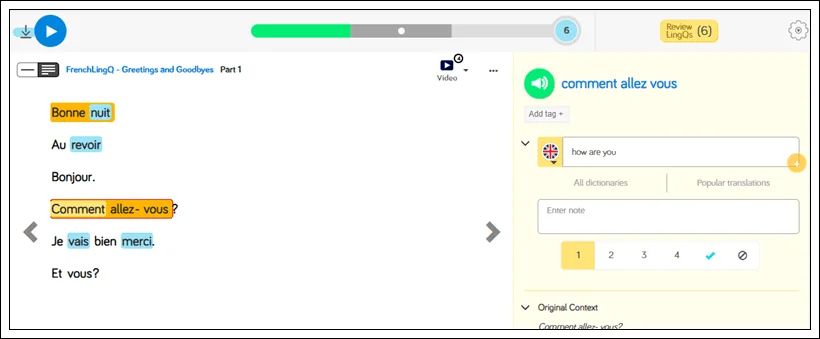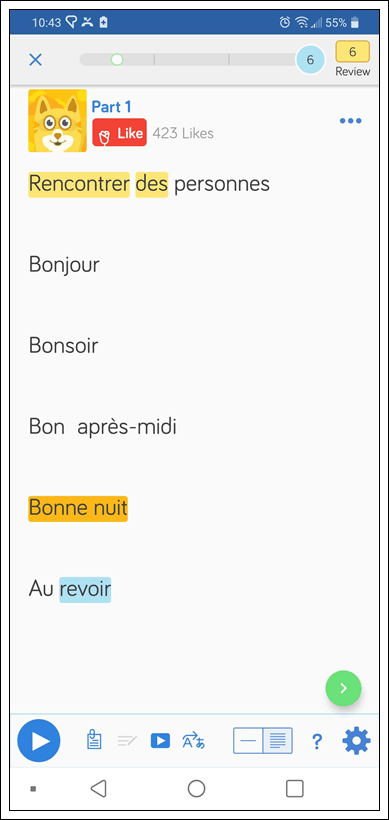The French Preposition “De” and How to Use It Properly
In our recent posts, we’ve been talking about the different ways that you can access French content to help you improve your language skills.
But today, I’d like to dive into something a little more grammar focused and at the same time, more tricky: the French preposition “De”.
In several ways, the French preposition “De” is a bit of a special preposition.
For starters, it has a variety of meanings and it also has several “functional” usages, where it serves a grammatical purpose even though it doesn’t have any meaning as such a word.
Plus, unlike most other prepositions in the French language, “De” can be combined with “Le” and “Les” in order to produce a few rare, alternative forms of the word.
In the following article, you’ll learn the meaning of the preposition “De” and how it’s used, along with a few examples and English translations as well.
The Many Meanings of “De”
As mentioned, “De” has a variety of different meanings in the French language, which we will enumerate below.
For starters, it can be translated to the English word “From”, especially if used in conjunction with a motion verb. For example: Elle vient de Paris. – She is from Paris.
It can be translated to “Of” in some contexts when used to describe on image or picture. For example: Un portrait de l’océan. – A portrait of the ocean.
It can be the equivalent of “Of” when used to denote a certain component of something or when used to form a compound noun. For example: Le doigt de ma main gauche. – The finger of my left hand.
“De” can be used to show possession, similar to using an apostrophe and an “S” in English. For example: Le manteau de Marie. – Marie’s jacket.
It can be the equivalent of “From” when it’s being used to describe a cause. For example: Elle est mort de cancer. – She died from cancer.
It can be used to denote what an object is made of. For example: C’est fait de velours. – It is made of velvet.
Lastly, “De” can be used to introduce an adjective’s “object”, just like how you would use “With” in English. For example: J’étais content de moi. I was happy with myself.
The Most Common Meaning of “De”
Of all the meanings that “De” can be used, it is most often used to mean “From”. This is especially true when talking about where someone or something is moving to or coming from, as well as marking the beginning of a period of time or a range of numbers.
We should also note that in English, people most often use between ___ and ___, rather than from ___ to ___, but essentially, the meanings are the same, they just sound different in English.
Examples
In French, if you wanted to say:
“Elle vient de Paris.”, it could be translated in two different ways; either “She comes from Paris.” or “She is coming from Paris.”
“Le boucher est ouvert de midi à cinq heures.”, it would be translated as “The butcher is open from noon until 5 o’clock.”
“Il a de 3 à 10 animaux.”, would be translated as “He has from 3 to 10 animals.” or “He has between 3 and 10 animals.”
Recap
There are, of course, exceptions to every rule. And although English tends to use “From” in the following situations, French does not.
When denoting the origin of a decision or the action of taking. For example: “I took the knife from my pocket” wouldn’t be “J’ai pris le couteau de ma poche”. Instead, it would be “J’ai pris le couteau dans ma poche.”
When it’s only the starting point of a range that’s being mentioned. For example: “Prices from €10.” wouldn’t be “Prix de €10”, but rather “Prix à partir de €10.”
In cases where there is ambiguity between prepositions such as “From” and “Of”. In this case, other French prepositions, such as “En provenance de” or “Depuis”, would be used.
When you get your mind wrapped around the concept of polite French formality and its relationship to the “tu/vous” choice, you’ll understand French greetings more easily. A lot of what you say in the context of greeting someone in French will involve some variation of grammar dependant on this grammar point. Using the idea of different French greetings in different situations is good and helpful – you aren’t going to say, “Okay, have a good night!” at ten in the morning, right? – it is also useful to narrow the options by asking yourself what level of formality or familiarity is called for in a given situation.
Learning French on LingQ
It’s no surprise that the more you read and listen, the faster you’ll learn French. At first, reading and listening can be a bit tedious, especially when you’re using multiple resources on different apps or platforms. Not too mention, learning should be fun and enjoyable…using content YOU love 😉
That’s why there’s LingQ. LingQ is the best way to learn French online simply because you can import content you love and use it to improve your language skills. For example, you can watch, read, and listen to YouTube videos using LingQ’s one-of-a-kind reading layout that allows you to easily look up words, listen to them, and save them for review. You can do the same for music, movies, and documents too. Check out this guide to learn more about importing content into LingQ.
If you’re reading this particular post, you’re probably a beginner and need a bit of guidance when it comes to content, right? There’s over 100 lessons for beginners on LingQ that will help you get a grasp of the French language. For example, Greetings and Goodbyes.

As you can see, you can easily look up new vocabulary and listen to how the words are pronounced.
Last but not least, LingQ is available on mobile. Take your lessons wherever you go and listen to your target language, read your transcripts, and create review flashcards. LingQ’s language learning apps are available for both Android and iOS.

Good luck and happy studying!


